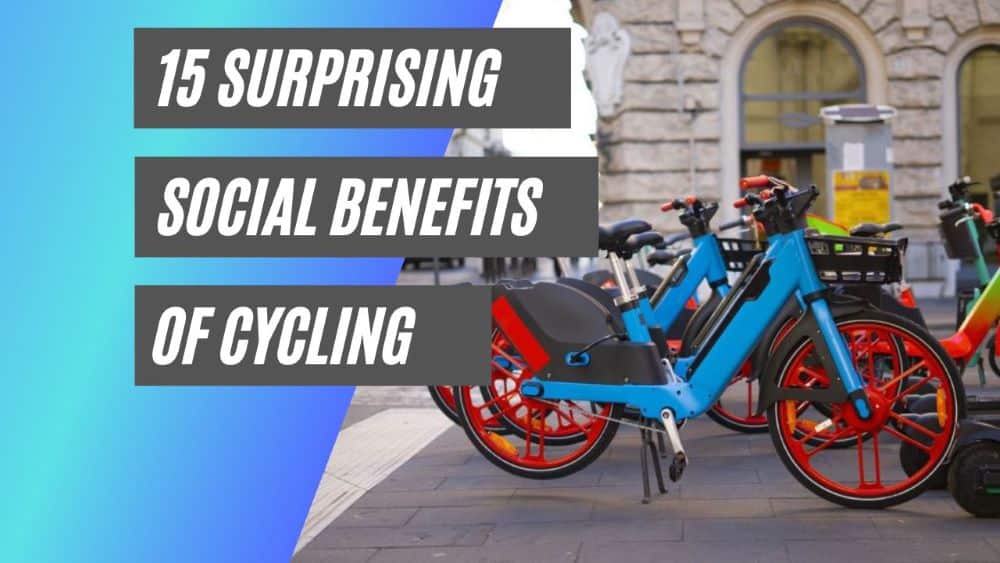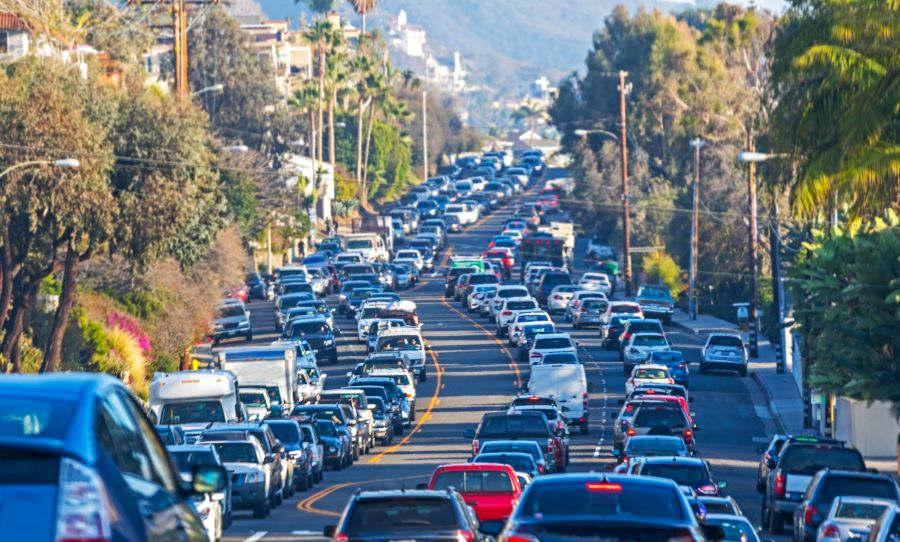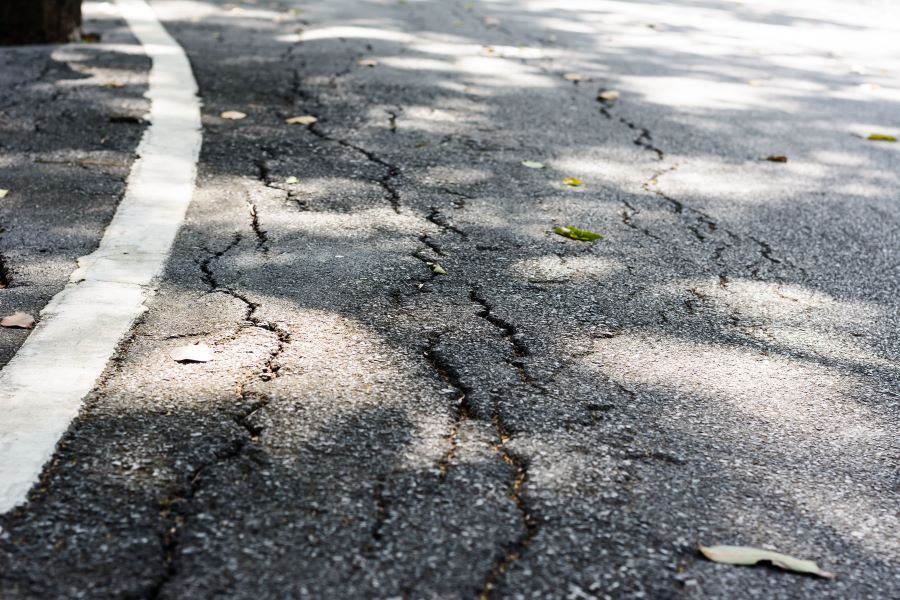This post may contain affiliate links. If you click an affiliate link and make a purchase, I may earn a commission. Also, as an Amazon Associate, I earn from qualifying purchases.--
Pretty much everyone knows that cycling is healthy, and is good cardio, yardy yardy yar-dah!
But when it comes to the social benefits, cycling is involved in a rich tapestry of positive outcomes! There are so many it’s almost impossible to get your head around them.
Just think – when you choose to cycle you choose not to drive a car, which has multiple benefits in itself.
But also, this choice impacts many other behaviors you may or may not realize you are demonstrating and influences the human and social environment around you.
Sound intriguing?!
I’ve been riding a bike to work for as long as I can remember, and in this post, I talk you through the 15 ultimate social benefits of cycling.

1. Boost To Local Business
Let’s start off with a bit of a weird one. This is one you might never really think about.
But the thing is when you choose to cycle, you limit the distance you will be traveling (unless you’re some kind of Tour de France dynamo).
Research has found that one of the biggest influences this has is where you shop.
You’re much less likely to travel to the big superstore in the next town when you’re on your bike.
So where do you go? To the local stores of course. Cycling is a real boost to the local economy.
Commuters often shop on their route to work.
There has even been conclusive research on this topic. (Source)
In 2020, the Portland State Study measured the implementation of 16 cycle paths across many different states on the local economy of businesses on those routes.
They found that the biggest boost was in food shops, and there were also positive increases in retail outlets.
Jenny Liu, Associate Professor in the Toulan School of Urban Studies and Planning, said, “I think that it is very significant that we found that positive business outcomes to the food service and retail industries on these corridors are persistent, even when we looked at different data metrics on employment or sales or when different analytical methods are utilized.”
2. Save 87 Billion Dollars
What’s this figure?!
87 billion dollars is the cost of congestion on the American economy in just one year. (Source)
Congestion has a big impact on:
- Wasted work time for employers
- Employee lateness
- Delays in moving goods around
- Increased fuel costs
Obviously, just one person converting to cycling won’t put a very big dent in this. But if there was a widespread move to cycling, then this could have a big impact on congestion.
Even just a 5 or 10 percent swing towards cycling would greatly ease congestion.
In the US, the most congested city is Boston. (Source)
It is followed by Chicago, Philadelphia, and then New York.

3. Cycling Can Be Status Enhancing
There is growing evidence that those who cycle to work are looked up to in the workforce.
Co-workers seem to respect the level of discipline that goes into it. Plus they may appreciate the green and health benefits.
There has recently been research performed that suggests there is a link between receiving a higher level of education and cycling to work.
This study was carried out by Dr. Ansgar Hudde, from the University of Cologne’s Institute For Sociology and Social Psychology.
They analyzed 800,000 journeys, done by 55,000 people over a 22-year period.
According to Hudde, ‘Individuals with a college degree are nearly 50% more likely to use bicycles that those without a college degree.’ (Source)
4. Social Mobility
One of the great things about bikes is that they are available to most people. This is outside of net worth, age, or even other issues such as some medical conditions.
Some key demographics that benefit from cycling include:
Those younger than the legal driving age
This has a positive impact on teenagers being able to work or commute to school
Those who live in serious poverty
In many parts of the world, a large proportion of the population is unable to afford a car.
Cycling helps those people work, travel, and commute for a range of purposes.
Indeed, most countries have a less car-driven society than America.
Quite surprisingly, 19% of all the cars in the world are in the United States. This is despite the population being less than 5 percent of the world’s combined population.
Older Generations
Many older people are reluctant to drive as they age. Cycling offers an alternative to those that are still able to do so safely.
5. Less Pressure On Public Transport
With cutting budgets across the world, public transport is often one of the first things to go.
This is compounded by the fact that many jobs in the United States are not based in the main urban areas, and so can only be got to by either limited public transport or no public transport at all.
The ITDP reported that 70% of regional jobs in the US are more than 3 miles away from central business districts. (Source)
Cycling can realistically provide the only alternative to using a car in many of these circumstances.

6. Save 19% Of Your Yearly Income!
This figure really shocked me, to be honest.
The latest figures show that in the US, the average cost of commuting to work is $8,466 a year. That’s quite something!
This equates to 19% of the average yearly income of a United States citizen.
This is basically one-fifth of everything you earn is lost in just getting to and from work in the first place. This is pretty depressing!
Of course, I completely understand that there may be logistics in the way for many people. You may live too far from work. Or the route is too dangerous.
But even so! Come on people. In exchange for 20% of your income each year, is it not time to make the jump to cycling? (Source)
7. Reducing Anxiety and Stress
There have been several studies carried out that demonstrate the positive effects of cycling on reducing anxiety and stress. (Source)
Reducing stress has many benefits for a wide proportion of society, such as:
- Reduced stress improves family time
- It improves productivity in the workforce
- It improves health and longevity
8. Reduced congestion around schools
There’s no worse way to start the day than stuck in a massive jam around the back of the local school.
Congestion around schools is getting worse year on year, and this is despite the fact that many of these car journeys are unnecessary.
The latest research suggests that in the US as many as 75% of children are taken to school in a car. In the UK, around 40% of children are transported by car. (Source)
Historical data suggests that a lot of these journeys are completely unnecessary.
Between 1977 and 1995 there was a 40 percent decrease in the number of school-age children walking to school in the US. This suggests that distances to schools have stayed similar, but transport habits have changed.
Cycling to school offers a brilliant form of exercise to start the school day, as well as ease the congestion in the locality.
9. Quality Family Time
Cycling has the ability to bond family members closer together!
Sharing experiences…
…creating beautiful parent and child time together…
…a great way for partners to reconnect…
…a healthy and enjoyable pastime.
10. Cost – 1% Of Travelling By Car
Here’s an economic benefit with social implications.
Traveling by bike over the course of a year is roughly equal to 1% of the cost of traveling the same journeys by car.
And, to be honest, that’s being pretty conservative.
If we take the figure of roughly $8000 a person in the United States as the cost of commuting by car, then 1% of this is just $80.
This is surely more than enough for a couple of puncture repair kits, a bicycle pump, and maybe the odd accessory to add to your cycling experience.
11. Save 99 Hours a Year
I was very surprised to hear this figure!
But apparently, the average American car commuter will lose 99 hours per year stuff in traffic jams.
We’ve all been there! Stuck on the way either to or from work, to business meetings, and meeting suppliers and representatives from local businesses.
Jams are time-consuming and stressful. They put everyone in a bad mood.
From an economic perspective, they cost the economy $1377 per person in the United States. That all adds up to tens of billions across the whole country.
Even a small percentage of commuters reverting to bicycles would make a big dent in this figure.
12. Less Impact On Roads
Here’s one you might not have thought of – the minimal impact that cycling has on roads compared to cars.
Repairing roads is a huge chunk of any nation’s budget.
I was astonished to find that the United States spends approximately $213billion a year doing up roads! That’s some serious cash. (Source)
The biggest negative impacts on roads are:
- Cars
- Trucks and lorries
- The weather in some regions
More cycling will reduce the impact on roads to some degree. This means more tax money back in the pot!
More tax money to pay for the good things in life – schools, hospitals, and all that great stuff.

13. Fewer Cars On Roads Leads To More Child Cycling
One of the interesting facts about cycling is the snowball effect of getting more people on their bikes.
One effect is that fewer cars on the roads lead to the roads becoming safer places. That, in turn, leads to more cyclists, and, inevitably, the confidence of parents to allow their children to cycle more on the roads.
Forbes Magazine reports there has been a 20% decrease in cyclists over the past 10 years in the US. This is amongst both junior and adult cyclists.
They cite the following reasons for this:
- Congestion
- More powerful and faster cars
- The price of bicycles
- Cultural shifts, like fear of letting children out alone (Source)
14. Cycling Creates A Feeling Of Connection To Local Community
When you cycle, you see your surroundings in a new way.
You feel a sense of greater attachment to the landscape and the people around you.
The rush of endorphins when cycling leads to positive thoughts that your mind connects to the scenery around you.
15. Join A Club!
You don’t just need to cycle by yourself! There are all sorts of cycling clubs and teams that you can join pretty much wherever you are.
Joining a team has all sorts of benefits, such as:
- A sense of belonging
- A sense of community
- Social interaction
- Forging lifelong relationships
- Being part of something larger than yourself
There are clubs of all types. More competitive ones, purely recreational, and clubs of different sizes.
